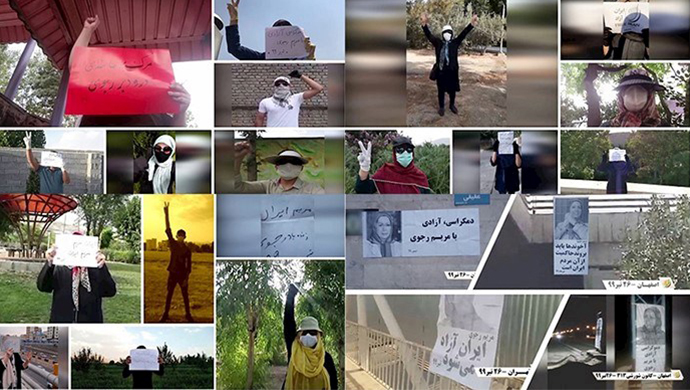
People’s Mojahedin of Iran (PMOI/MEK) supporters known as Iranian Resistance Units have been commemorating the MEK’s 57th founding anniversary in numerous Iranian cities, towns, and villages. With the aim of establishing freedom, democracy, and human rights in a non-nuclear Iran, their campaign focuses on restoring hope, energizing the nation’s restless people, and leading the ongoing struggle against the mullahs’ regime.
Mohammad Hanifnejad, Saeid Mohsen, and Ali Asghar Badizadegan, three Iranian youths who had been involved in previous social movements for freedom, founded the MEK on September 6, 1965, at a time when the Shah regime had suppressed all opposition movements and imprisoned or executed their leaders.
The MEK’s founders and early members understood that the only way to achieve freedom was to depose the Shah regime and replace it with a popular government led by elected officials. Their ideas spread, attracting members of Iran’s intellectuals and youth who were dissatisfied with the Shah dictatorship and dedicated to serving their country.
Despite the Shah’s repressive measures, the MEK founders were able to reorganize their ranks and files and pave the way for the 1979 revolution. The Iranian people embraced the MEK, as evidenced by the organization’s rapid expansion across the country and its ability to organize major rallies in cities such as Rasht, Tabriz, and Tehran. The crowds and demonstrations in these three cities numbered in the hundreds of thousands, sending a strong message to the regime of the ruling mullahs.
Following in the footsteps of the Shah, the regime of Ruhollah Khomeini, the mullahs’ first Supreme Leader, launched a massive crackdown on the MEK, culminating in the summer 1988 massacre of over 30,000 political prisoners in a matter of months, with the goal of eradicating the organization entirely throughout Iran.
Following Khomeini’s death, his successor, Ali Khamenei, carried on the regime’s wrath against the MEK in a decades-long campaign to cut off all contact between the MEK and the Iranian people. Despite the regime’s plots and conspiracies, the MEK has now demonstrated that it has expanded its network within Iran, as evidenced by the 5,000 video messages sent by Resistance Units members across the country. Khamenei and his inner circle, including the Revolutionary Guards, are acutely aware of the MEK and their ever-expanding network of Resistance Units across Iran.
Today, 57 years after its inception, the MEK has endured numerous trials and tribulations. Thousands of MEK members laid down their lives in the tradition of their founders to keep the flame of resistance for freedom burning. The massacre of over 30,000 political prisoners in 1988, the heroic operations of the National Liberation Army, and the 14-year resistance of MEK members in camps Ashraf and Liberty are just a few of the highlights of the history of Iran’s main opposition movement following the fall of the Shah regime.
 MEK Iran (follow us on Twitter and Facebook), Maryam Rajavi’s on her site, Twitter & Facebook, NCRI (Twitter & Facebook), and People’s Mojahedin Organization of Iran – MEK IRAN – YouTub
MEK Iran (follow us on Twitter and Facebook), Maryam Rajavi’s on her site, Twitter & Facebook, NCRI (Twitter & Facebook), and People’s Mojahedin Organization of Iran – MEK IRAN – YouTub







